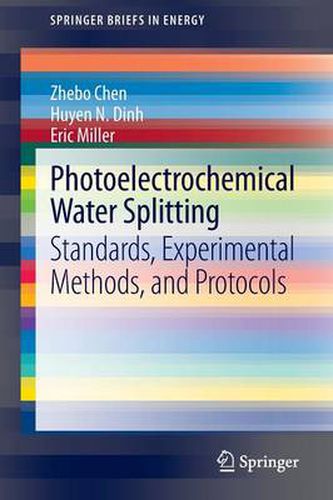Readings Newsletter
Become a Readings Member to make your shopping experience even easier.
Sign in or sign up for free!
You’re not far away from qualifying for FREE standard shipping within Australia
You’ve qualified for FREE standard shipping within Australia
The cart is loading…






This title is printed to order. This book may have been self-published. If so, we cannot guarantee the quality of the content. In the main most books will have gone through the editing process however some may not. We therefore suggest that you be aware of this before ordering this book. If in doubt check either the author or publisher’s details as we are unable to accept any returns unless they are faulty. Please contact us if you have any questions.
This book outlines many of the techniques involved in materials development and characterization for photoelectrochemical (PEC) - for example, proper metrics for describing material performance, how to assemble testing cells and prepare materials for assessment of their properties, and how to perform the experimental measurements needed to achieve reliable results towards better scientific understanding. For each technique, proper procedure, benefits, limitations, and data interpretation are discussed. Consolidating this information in a short, accessible, and easy to read reference guide will allow researchers to more rapidly immerse themselves into PEC research and also better compare their results against those of other researchers to better advance materials development.
This book serves as a how-to guide for researchers engaged in or interested in engaging in the field of photoelectrochemical (PEC) water splitting. PEC water splitting is a rapidly growing field of research in which the goal is to develop materials which can absorb the energy from sunlight to drive electrochemical hydrogen production from the splitting of water. The substantial complexity in the scientific understanding and experimental protocols needed to sufficiently pursue accurate and reliable materials development means that a large need exists to consolidate and standardize the most common methods utilized by researchers in this field.
$9.00 standard shipping within Australia
FREE standard shipping within Australia for orders over $100.00
Express & International shipping calculated at checkout
This title is printed to order. This book may have been self-published. If so, we cannot guarantee the quality of the content. In the main most books will have gone through the editing process however some may not. We therefore suggest that you be aware of this before ordering this book. If in doubt check either the author or publisher’s details as we are unable to accept any returns unless they are faulty. Please contact us if you have any questions.
This book outlines many of the techniques involved in materials development and characterization for photoelectrochemical (PEC) - for example, proper metrics for describing material performance, how to assemble testing cells and prepare materials for assessment of their properties, and how to perform the experimental measurements needed to achieve reliable results towards better scientific understanding. For each technique, proper procedure, benefits, limitations, and data interpretation are discussed. Consolidating this information in a short, accessible, and easy to read reference guide will allow researchers to more rapidly immerse themselves into PEC research and also better compare their results against those of other researchers to better advance materials development.
This book serves as a how-to guide for researchers engaged in or interested in engaging in the field of photoelectrochemical (PEC) water splitting. PEC water splitting is a rapidly growing field of research in which the goal is to develop materials which can absorb the energy from sunlight to drive electrochemical hydrogen production from the splitting of water. The substantial complexity in the scientific understanding and experimental protocols needed to sufficiently pursue accurate and reliable materials development means that a large need exists to consolidate and standardize the most common methods utilized by researchers in this field.